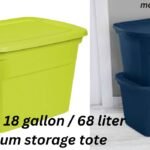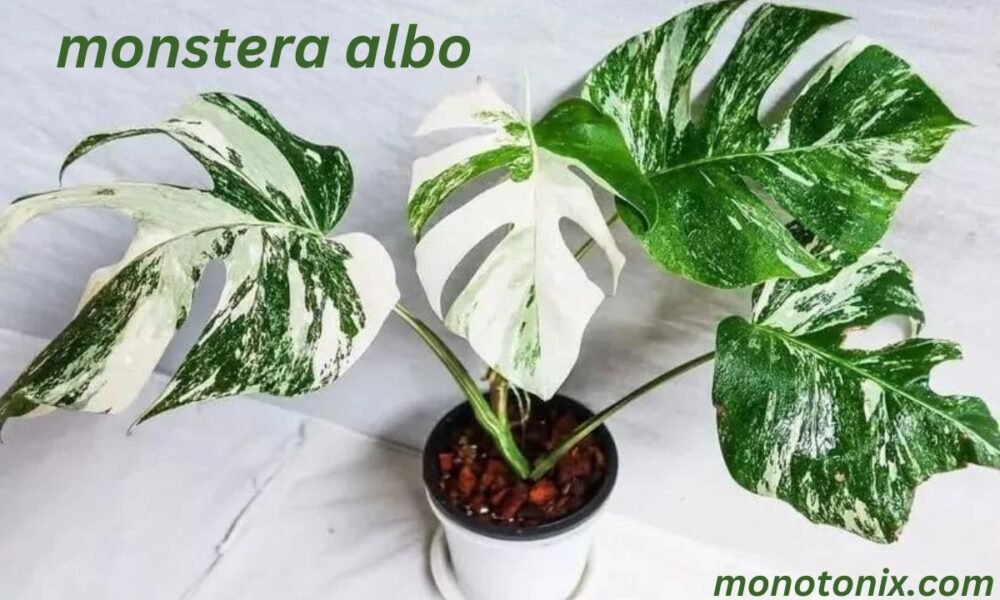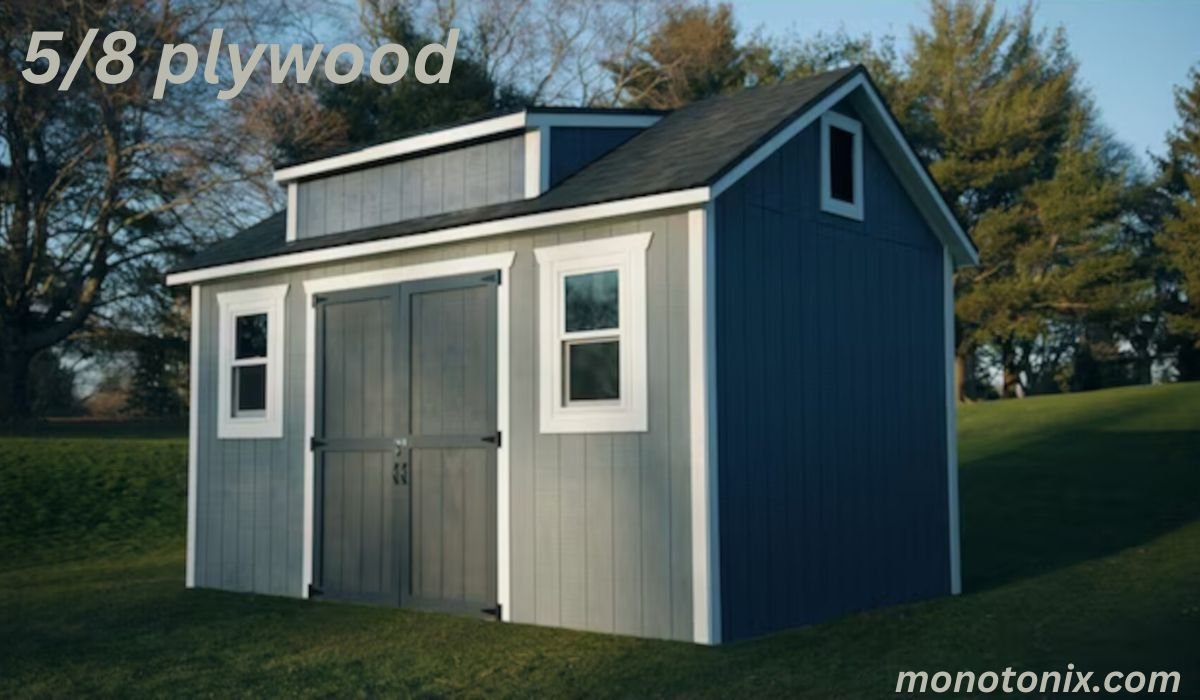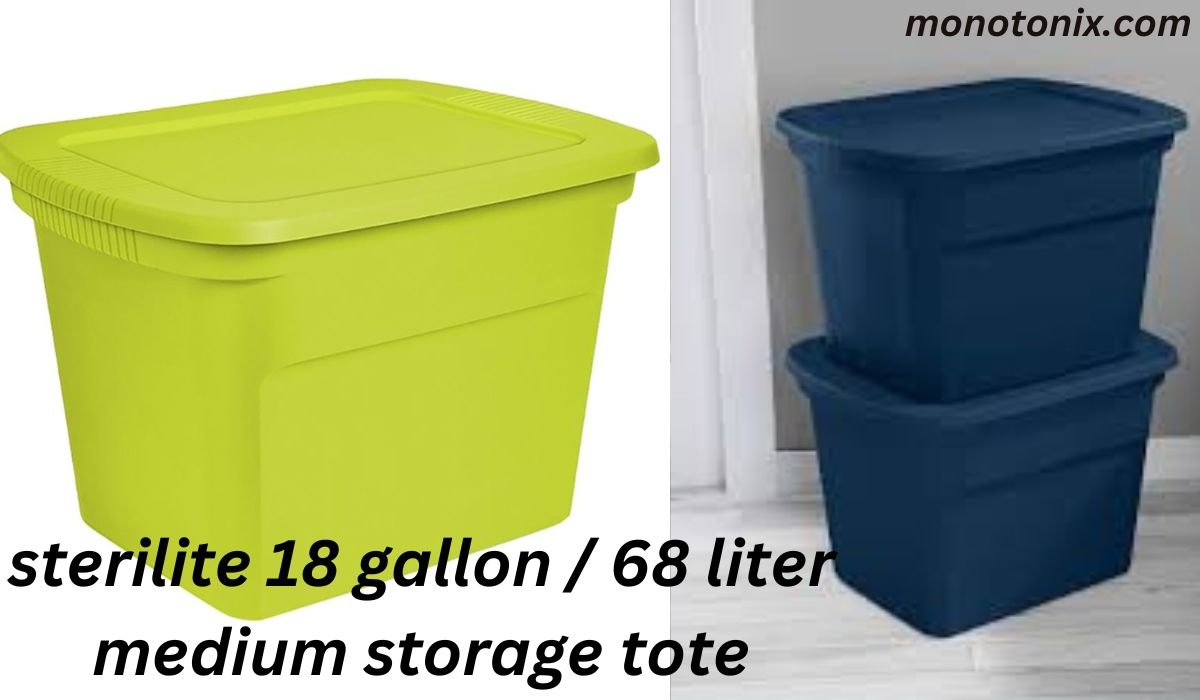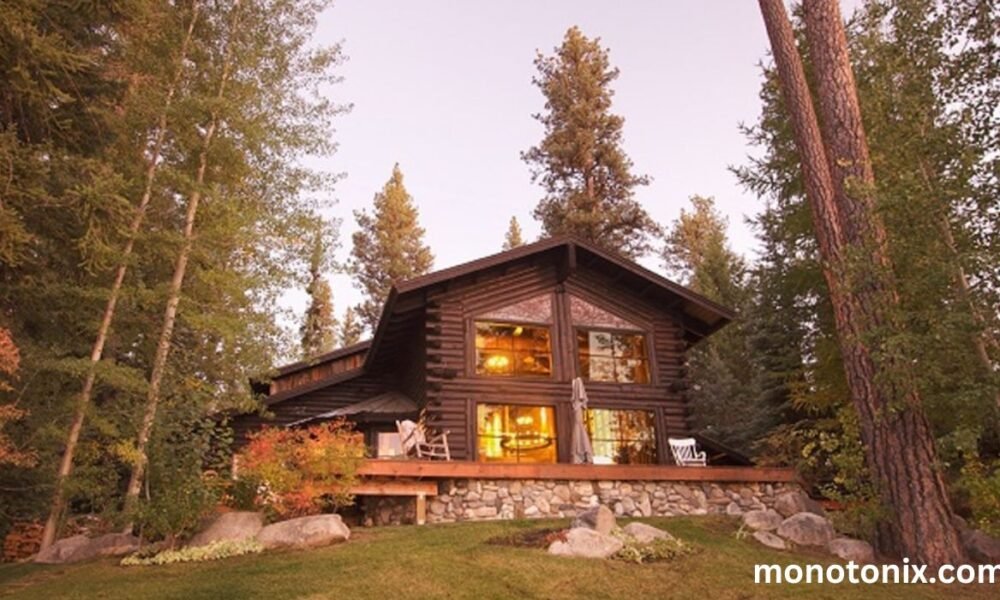Introduction
Welcome, plant enthusiasts! Today, we’re diving into the fascinating world of Monstera Albo, also known as Monstera deliciosa Albo Variegata. This stunning houseplant has captivated the hearts of plant lovers everywhere with its unique and mesmerizing variegated foliage. If you have a green thumb—or even if you’re just starting your plant journey—you’ll want to learn more about this botanical beauty. Join us as we explore what makes Monstera Albo so special, from its origins to its care requirements.
What is Monstera Albo?
Monstera Albo is a subspecies of the well-known Monstera Deliciosa, commonly referred to as the Swiss Cheese Plant. What sets it apart is its striking variegation—large, split leaves adorned with patches of white alongside rich green. This variegation is not just a feast for the eyes but a mark of rarity and uniqueness, making each plant a living piece of art.
The plant also features long, striped stems that can develop aerial roots. These roots help stabilize the plant, especially as it climbs, making it an excellent candidate for trellises or moss poles. With its climbing nature and dramatic foliage, Monstera Albo can quickly become the focal point of any room.
Native Habitat
Monstera Albo hails from the tropical rainforests of Central America. In its native habitat, it thrives in the humid, dappled light conditions found under the rainforest canopy. Understanding its origin can guide you in mimicking these conditions to ensure your plant stays healthy and vibrant.
Similar to its parent plant, Monstera Deliciosa, the Albo variety prefers a humid environment and indirect sunlight. However, the variegated nature of its leaves makes it slightly more high-maintenance, requiring a bit more attention to thrive.
The Popularity of Monstera Albo
Monstera Albo has become one of the most sought-after houseplants, often appearing on plant wishlists worldwide. Its unique appearance and relative rarity contribute to its high desirability. Plant enthusiasts are willing to go to great lengths—and pay premium prices—to add this beauty to their collections.
The price point of a Monstera Albo is significantly higher than that of a standard Monstera Deliciosa. This is primarily due to its variegation, which is a genetic mutation that makes the plant harder to propagate and more exclusive. It’s not uncommon to see Monstera Albo cuttings or established plants fetching hundreds of dollars on the market.
Toxicity to Pets
While Monstera Albo is a joy to behold, it’s important to note that it is toxic to pets. If you have cats or dogs at home, be cautious about where you place your plant. The leaves contain calcium oxalate crystals, which can cause irritation and swelling if ingested. Always keep it out of reach of your furry friends to avoid any unwanted trips to the vet.
Providing Support with a Moss Pole
Given its climbing nature, Monstera Albo benefits greatly from the support of a moss pole. This not only helps the plant grow upright but also promotes healthier growth. The aerial roots can anchor themselves into the moss, mimicking the plant’s natural climbing behavior in the wild. Over time, this support can lead to larger, more mature leaves, enhancing the plant’s overall aesthetic.
Light Requirements
Monstera Albo thrives in bright, indirect light. Direct sunlight can scorch its delicate variegated leaves, leading to unsightly brown spots. Ideally, place your plant near a window where it can receive filtered light, mimicking the dappled sunlight it would receive under the rainforest canopy.
If you’re growing your Monstera Albo indoors, consider using sheer curtains to diffuse the light. Alternatively, you can use grow lights to supplement natural light, especially during the darker winter months.
Watering Needs
Watering your Monstera Albo requires a balance between keeping the soil moist and allowing it to dry out between waterings. Overwatering can lead to root rot, a common issue with many houseplants. The key is to water thoroughly and then wait until the top inch of the soil is dry before watering again.
Using well-draining soil and a pot with drainage holes can help prevent water from sitting at the bottom, reducing the risk of root rot. During the growing season (spring and summer), you may need to water more frequently, while in the dormant period (fall and winter), you can scale back.
Humidity and Temperature
Monstera Albo loves humidity, so aim to keep the surrounding air moist. You can achieve this by misting the leaves regularly, placing a humidifier nearby, or using a pebble tray filled with water. The ideal humidity level for Monstera Albo is around 60-80%.
Temperature-wise, aim for a range between 65°F and 85°F (18°C to 29°C). Avoid placing your plant near drafts, heating vents, or air conditioning units, as sudden temperature changes can stress the plant.
Fertilizing Your Monstera Albo
Feeding your Monstera Albo with the right nutrients can make a significant difference in its growth and overall health. Use a balanced, water-soluble fertilizer every four to six weeks during the growing season. Be sure to follow the instructions on the fertilizer package to avoid overfeeding.
During the dormant period, you can reduce the frequency of fertilizing, as the plant’s growth slows down. Always water your plant before applying fertilizer to prevent root burn.
Pruning and Maintenance
Regular pruning helps maintain the shape and size of your Monstera Albo. Remove any yellowing or damaged leaves to encourage new growth. Pruning also allows you to control the plant’s height and spread, making it easier to manage.
Use clean, sharp scissors or pruning shears to make clean cuts. If you notice any pests or diseases, such as spider mites or fungal infections, address them promptly to prevent them from spreading.
Propagation Tips
Propagating Monstera Albo can be a rewarding experience. The most common method is through stem cuttings. Here’s how you can do it:
- Select a healthy stem with at least one node and one leaf.
- Cut just below the node using a clean, sharp knife or scissors.
- Place the cutting in water or moist soil.
- Keep the cutting in a warm, humid environment with indirect light.
- Once roots develop, transplant the cutting into a pot with well-draining soil.
Regularly check the cutting for signs of root development. Patience is key, as it can take several weeks for roots to form.
Common Issues and Solutions
Like any plant, Monstera Albo can encounter a few challenges. Here are some common issues and how to address them:
- Yellowing Leaves: This can be a sign of overwatering or poor drainage. Allow the soil to dry out and ensure the pot has drainage holes.
- Brown Leaf Tips: Often caused by low humidity or underwatering. Increase humidity levels and ensure consistent watering.
- Pests: Spider mites and aphids can be problematic. Use insecticidal soap or neem oil to treat infestations.
By staying vigilant and addressing issues promptly, you can keep your Monstera Albo healthy and thriving.
YOU MAY ALSO LIKE;
Discover the Power of Kecveto for a Healthier Life
Summing It Up
Monstera Albo is truly a gem in the world of houseplants. Its stunning variegated leaves and unique climbing nature make it a must-have for plant enthusiasts. While it requires a bit more attention and care than its non-variegated counterpart, the rewards are well worth the effort.
For those looking to add a touch of elegance and rarity to their indoor jungle, Monstera Albo is an excellent choice. With the right care, this plant can become a striking centerpiece in your home.
If you’re ready to take the plunge and bring a Monstera Albo into your life, remember to provide it with the right light, water, and support. And don’t forget to join our community of plant lovers to share tips, experiences, and inspiration.
FAQs
- How much light does Monstera Albo need?
- Monstera Albo thrives in bright, indirect light. Avoid direct sunlight to prevent leaf scorch.
- How often should I water my Monstera Albo?
- Water thoroughly and allow the top inch of soil to dry out between waterings to avoid root rot.
- What is the ideal humidity for Monstera Albo?
- Aim for a humidity level of around 60-80%. Regular misting, a humidifier, or a pebble tray can help maintain this.
- What type of fertilizer is best for Monstera Albo?
- Use a balanced, water-soluble fertilizer every four to six weeks during the growing season and reduce frequency in the dormant period.
- How can I propagate my Monstera Albo?
- Propagate through stem cuttings, ensuring at least one node and one leaf. Place the cutting in water or moist soil until roots develop.






